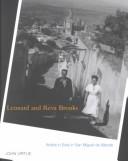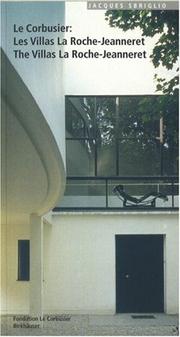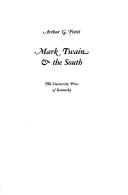| Listing 1 - 3 of 3 |
Sort by
|

ISBN: 1282860143 9786612860140 0773569839 9780773569836 0773522980 9780773522985 Year: 2001 Publisher: Montréal [Que.] McGill-Queen's University Press
Abstract | Keywords | Export | Availability | Bookmark
 Loading...
Loading...Choose an application
- Reference Manager
- EndNote
- RefWorks (Direct export to RefWorks)
In 1947 Leonard and Reva Brooks left for Mexico where Leonard planned to study painting for a year. In Mexico they discovered a vibrant, sometimes even dangerous, society and a dynamic artistic community, unlike the mundane world they had left behind in Canada with its stale and unwelcoming artistic scene. Invigorated by their new environment Leonard and Reva ended up staying for over half a century, playing a key role in establishing San Miguel de Allende as a world-famous art colony. In this new biography, John Virtue chronicles the lives of these two important artists and offers an intimate look at these complex and creative people. Virtue describes how they were caught up in the McCarthy era of Communist witch hunts and blacklisted in the United States. He details their close friendships with luminary figures such as Marshall McLuhan, Earle Birney, and the Mexican art icon David Alfaro Siqueiros, as well as a host of others. As Leonard became a fixture in the Mexican art scene Reva's photography quickly garnered international recognition, applauded by photographers Ansel Adams and Edward Weston. In 1975 the San Francisco Museum of Art selected her as one of the top fifty female photographers of all time. With tales of deportations, shootouts, murder attempts, failures, and triumphs, Leonard and Reva Brooks is a biography of two creative people caught up in interesting times.
Expatriate artists --- Artists --- Canadians --- Brooks, Leonard, --- Brooks, Reva, --- Artistes --- Canadiens --- Ethnology --- Artists, Expatriate --- Exiled artists --- Exiles --- Résidences et lieux familiers --- Brooks, Reva --- Homes and haunts --- San Miguel de Allende (Mexico) --- San Miguel de Allende --- San Miguel Allende (Mexico) --- Allende (Guanajuato, Mexico) --- San Miguel el Grande (Guanajuato, Mexico) --- Intellectual life --- Vie intellectuelle. --- Residences et lieux familiers

ISBN: 376435433X 081765433X 3035603065 9783035603064 9783764354336 Year: 1997 Publisher: Basel Fondation Le Corbusier
Abstract | Keywords | Export | Availability | Bookmark
 Loading...
Loading...Choose an application
- Reference Manager
- EndNote
- RefWorks (Direct export to RefWorks)
Dieser Architekturführer beschreibt sowohl die Villa La Roche als auch die angebaute Villa Jeanneret, Sitz der Fondation Le Corbusier. le Corbusier: "La Roche, when one owns such a splendid art collection as yours, one must construct a house that does it honour." - La Roche: "Very well then, build this house for me." This was the genesis of the Villa La Roche (1923-1925), a brilliant synthesis of residence and private gallery, as recounted by the Swiss banker and collector of Cubist art, Raoul la Roche. The developmental leap which Le Corbusier made in his architecture and the liberty of expression in his use of colour, light and spatial organisation which he discovered during the final stages of this project inaugurated his rise to one of the giants of 20th century architecture. This guide leads the reader through both the Villa La Roche and the attached Villa Jeanneret, which houses the Fondation Le Corbusier.
Architecture --- Corbusier, Le --- Le Corbusier, --- La Roche, Raoul, --- Jeanneret, Albert --- Criticism and interpretation. --- Homes and haunts --- Villa La Roche (Paris, France) --- Villa Jeanneret (Paris, France) --- Paris (France) --- Buildings, structures, etc. --- Constructions --- Villas La Roche-Jeanneret --- Art, Architecture & Applied Arts --- Corbusier, le --- Le Corbusier --- La Roche, Raoul --- Critique et interprétation --- Résidences et lieux familiers --- Villas La Roche-Jeanneret. --- Constructions. --- Critique et interprétation. --- Roche, Raoul La, --- Jeanneret-Gris, Charles Edouard, --- Gris, Charles Edouard Jeanneret-, --- Jeanneret, Charles Edouard, --- Corbusier, Edouard le, --- Le Corbusier, Eduard, --- Le Corbusier-Saugnier, --- Corbusier, --- Kebiyi, --- Korubyujie, --- Le Korbi︠u︡zʹe, --- Le Kebuxiye, --- Lu Kūrbūziyah, --- Ru Korubyujie, --- Rangnalei, Chaersi Aidehua, --- 勒・柯布西耶, --- 让纳雷, 查尔斯・爱德华, --- Le Corbusier. --- Paris. --- Ле Корбюзьє, --- Critique et interprétation --- Résidences et lieux familiers --- ARCHITECTURE / Individual Architects & Firms / General.

ISBN: 0813113105 9780813148786 0813148782 9780813113104 1322595240 0813131758 Year: 1974 Publisher: Lexington : University Press of Kentucky,
Abstract | Keywords | Export | Availability | Bookmark
 Loading...
Loading...Choose an application
- Reference Manager
- EndNote
- RefWorks (Direct export to RefWorks)
The South was many things to Mark Twain: boyhood home, testing ground for manhood, and the principal source of creative inspiration. Although he left the South while a young man, seldom to return, it remained for him always a haunting presence, alternately loved and loathed. To follow his changing attitudes toward the South and its people is to observe the evolving opinions of many Americans during the era that bears the abusive name he gave it -- the Gilded Age. This is the first book on a major yet largely ignored aspect of the private life of Samuel Clemens and one of the major themes in Ma
Etats du Sud (Etats-Unis) dans la littérature --- Southern States -- In literature --- Southern States in literature --- Zuidelijke Staten (Verenigde Staten) in de literatuur --- Literature and society --- Race relations in literature. --- History --- Twain, Mark, --- Political and social views. --- Southern States --- In literature. --- Twain, Mark --- Criticism and interpretation --- Literature --- Literature and sociology --- Society and literature --- Sociology and literature --- Sociolinguistics --- Social aspects --- Tvėn, Mark --- Tuėĭn, Mark --- Tuwayn, Mārk --- Twayn, Mārk --- Tʻu-wen, Ma-kʻo --- Tven, M. --- Touen, Makū --- Twain, Marek --- Make Tuwen --- Tuwen, Make --- Make Teviin --- Твен, Марк --- Touain, Mark --- טבןַ, מרק, --- טוויין, מארק, --- טוויין, מרק, --- טווין, מארק, --- טווין, מרק, --- טווען, מארק, --- טוין, מרק, --- טװען, מארק, --- טװײן, מארק, --- 馬克吐温, --- Tuvāyn, Mārk --- Tvāyn, Mārk --- تواين، مارک --- Clemens, Samuel Langhorne --- Snodgrass, Quintus Curtius --- Conte, Louis de --- Twain, Mark (1835-1910) --- États-Unis (sud) --- Thèmes, motifs --- Amis et relations --- Résidences et lieux familiers --- Dans la littérature --- États-Unis (sud) --- Thèmes, motifs --- Résidences et lieux familiers --- Dans la littérature
| Listing 1 - 3 of 3 |
Sort by
|

 Search
Search Feedback
Feedback About UniCat
About UniCat  Help
Help News
News